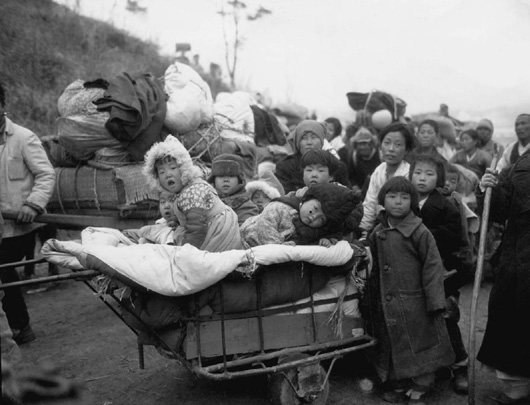
In 1943, in the middle of World War II, President Franklin D. Roosevelt, Premier Joseph Stalin, and Prime Minister Winston Churchill discussed the fate of Korea at the Cairo Conference, in anticipation of Korea’s liberation from Japanese rule. Roosevelt hoped to grant Korea independence “in due course” after a period of trusteeship under the Allied Powers. This did not sit well with the Korean people. The Korean nation had been in existence far longer than any of the Allied Powers. By the seventh century, Korea was a unified nation with its own language, culture, monarchy, state bureaucracy, and centuries of high civilization comparable to that in neighboring China and Japan. Korea had been an independent nation for over a thousand years when Japan annexed it in 1910.
Korea’s fate after World War II was not decided by a trusteeship, but by military conditions on the ground. Roosevelt anticipated there would be heavy losses in defeating the Japanese forces in China and Korea. Hoping to leave those operations to Soviet forces, he agreed at the Yalta Conference in February 1945 that for entry into the war against Japan, Stalin would get the southern Sakhalin and the Kurile Islands, the lease of ports at Dairen [Dalian] and Port Arthur [Lüshun], and control of key railroads in northeast China, formerly Manchuria. At the Potsdam Conference in July 1945, news of the successful testing of the atomic bomb significantly dampened President Harry Truman’s enthusiasm for a quick Soviet entry into the war. Japan surrendered virtually overnight in August soon after the atomic bombings of Hiroshima and Nagasaki, coupled with rapid Soviet advances in Manchuria. Truman, who had become president after Roosevelt’s death in April, proposed that the occupation of Korea be shared, divided along the 38th parallel. To his surprise, Stalin agreed. Although the entire peninsula had been his for the taking, Stalin was focused more on consolidating control over Eastern Europe. Control over the northern half of Korea was enough to secure Soviet interests without unduly antagonizing Washington. Eventually, the two zones were to be united under a trusteeship, but as the cold war heated up in Europe, it soon became clear that no reconciliation between the superpowers, and their respective zones, would be possible.
Violent upheavals by communists and leftists plagued the American zone. In the face of Soviet opposition, a UN-sponsored election for a national assembly was conducted but only in the South in May 1948. The new national assembly chose an aging and fiery nationalist, Syngman Rhee, to be the first president of the Republic of Korea. Four months later, in September 1948, the Democratic People’s Republic of Korea was established in the north, headed by a young former Soviet Army captain and anti-Japanese guerilla fighter, Kim Il Sung. By the end of 1948, two antithetical and antagonistic regimes were formed, each with its own vision of Korea’s future.
Stalin gave Kim Il Sung the green light to launch the invasion of South Korea, which took place at dawn on June 25, 1950. Within a week, American forces, under the UN flag, were committed in the fighting. Kim Il Sung’s war of liberation had turned global, and China’s entry in October 1950 risked expansion into World War III. The unfinished war, the first hot war of the cold war, intensified global confrontation and competition between the United States and the Soviet Union. Paradoxically, the new international order that resulted from the fighting significantly reduced the possibility of a world war by establishing a stable balance of power that neither side was willing to upset.